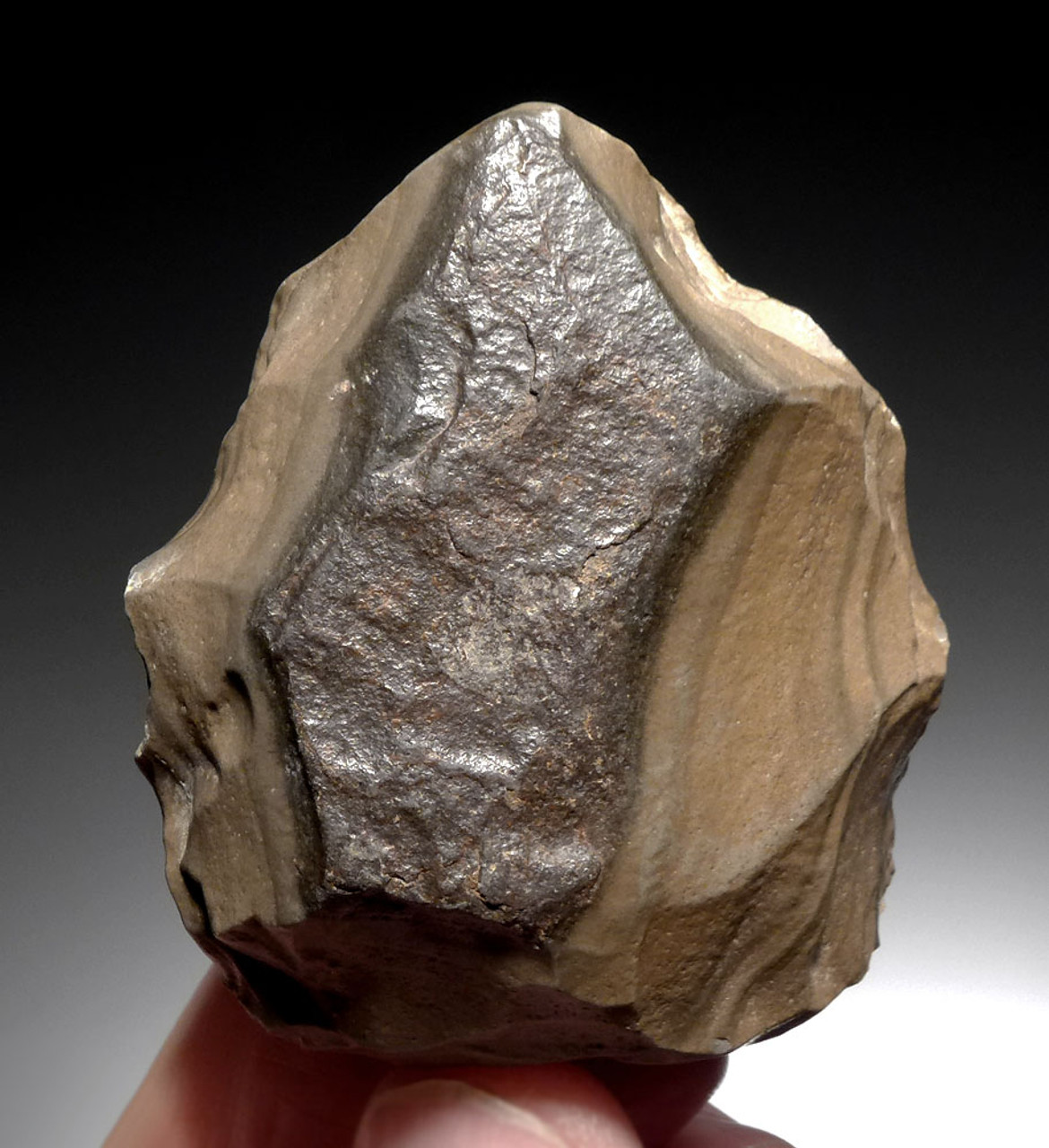Product Description
Made of layered, tabular flint, this Mousterian Middle Stone Age small hand axe biface exhibits STUNNING aesthetics. As it lay exposed for millennia in the desert, the wind and sand erosion created its smooth, worn appearance in banded colors! It compares identically to similar small bifaces found in the Mousterian Period of Europe, with hand axe anatomy. Just like its European cousins, one wonders how can it be practical? Like a tiny, miniaturized version of the hand axes made at least a half a million years earlier than the Middle Paleolithic, what was its purpose? Art? Barter? Functional for children? It is a stunning and highly unusual example in perfect, original condition. All the traits of a hand axe are present such as the faceted palm grip on the proximal end, complete bifacial flaking and a pointed, chopping end.
The workmanship is spectacular of this extraordinary hand axe made of tabular flint could easily have been a PRESTIGE PIECE as it would have been as colorful in prehistory as it is today. Unlike their much larger predecessors of the Sahara during the Acheulian, Mousterian handaxes are much smaller in comparison. In "as found" ORIGINAL condition with NO REPAIR AND NO RESTORATION.
 US DOLLAR
US DOLLAR
 EURO
EURO
 AUSTRALIAN DOLLAR
AUSTRALIAN DOLLAR
 CANADIAN DOLLAR
CANADIAN DOLLAR
 POUND STERLING
POUND STERLING




























